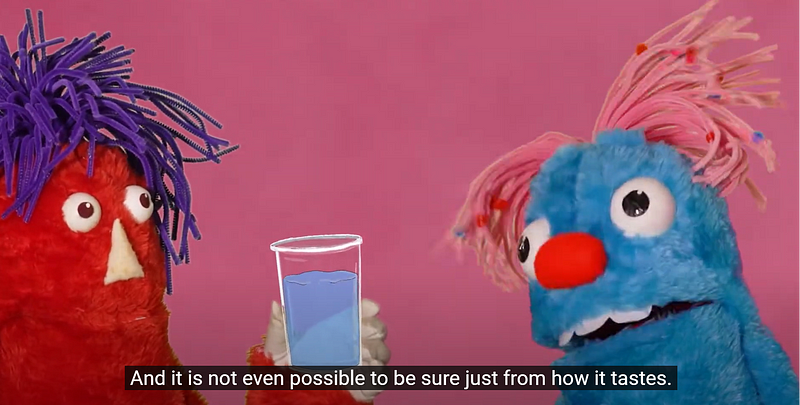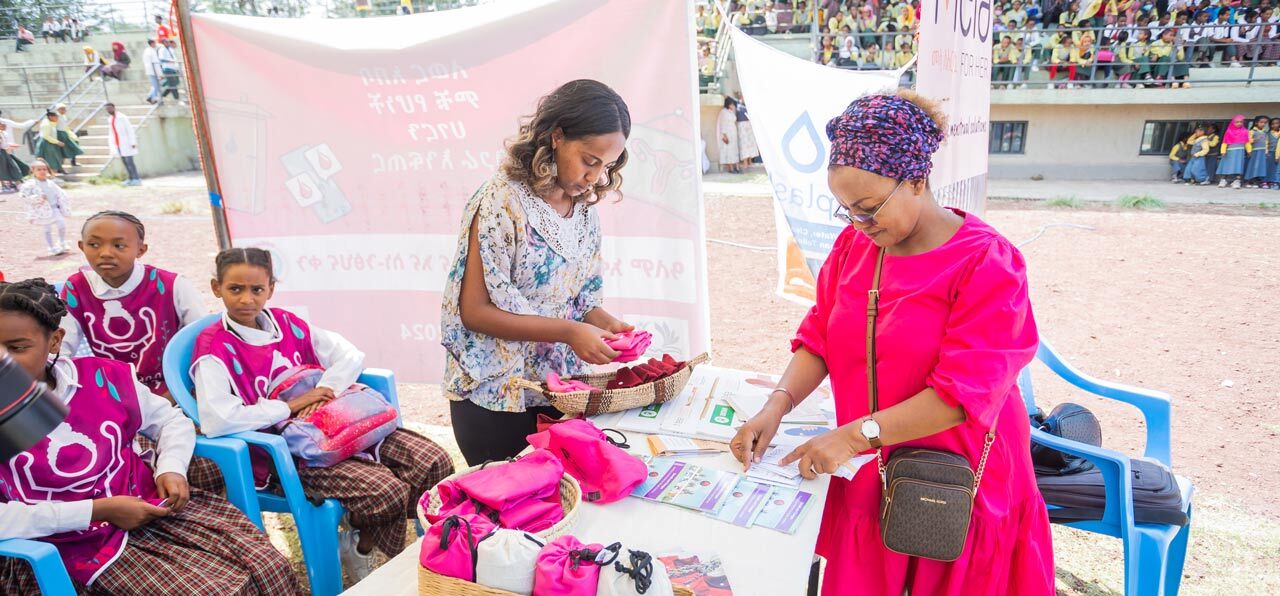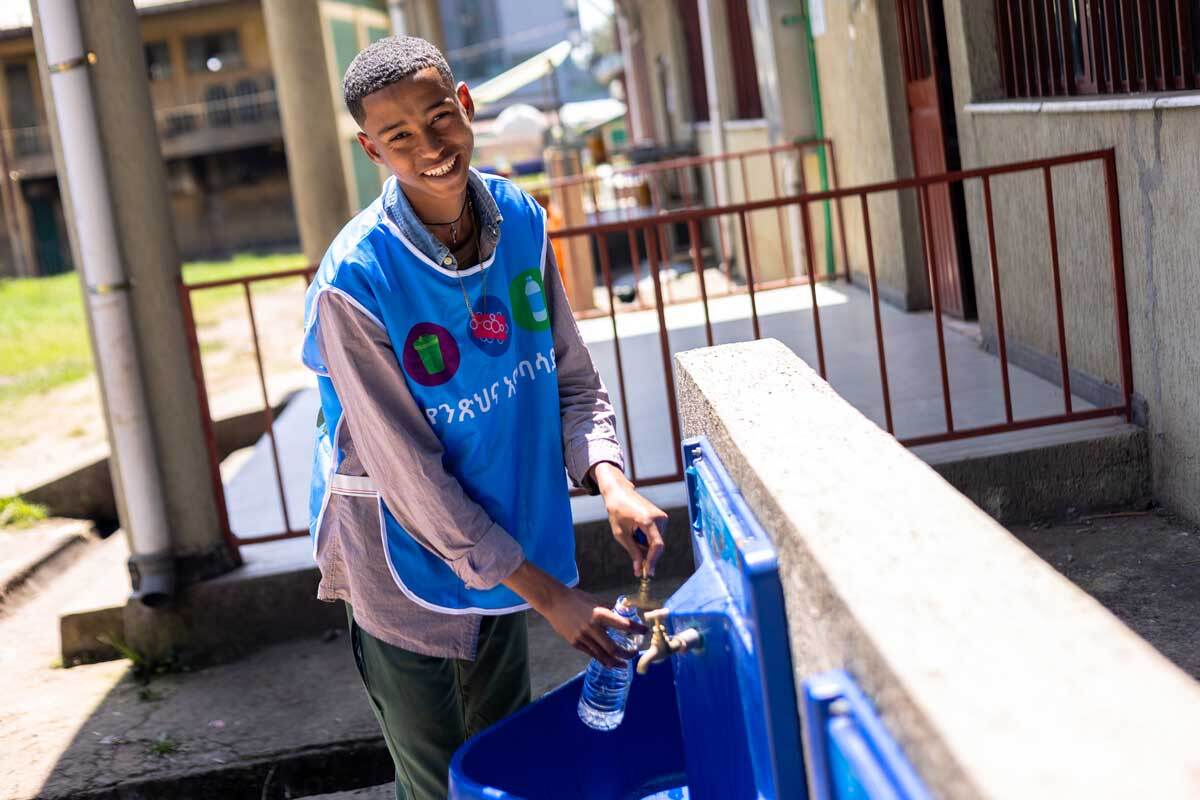Articles and information about Splash and the work we do.

January 9, 2024
Driving Behavior Change Through Human-Centered Design Approaches


As digital communications become more commonplace worldwide, we set out to create video content for kids about topics like safe water, hygiene, menstrual health, and advocacy. The ultimate goal of these videos is to foster good hygiene practices among kids in schools, making this content available to children both inside and out of a school setting.
Employing a human-centered design approach to this process resulted in creating appropriate story lines, character traits, knowledge motivators, and understanding which triggers resonate with viewers.
Let’s talk about how we got here.
What is Human-Centered Design?
Human-centered design (HCD) is an approach to problem-solving and innovation that puts people’s needs, preferences, and experiences at the forefront of the design process. It focuses on creating products, services, systems, or experiences that are intuitive, functional, and meaningful to the people who will use them. The end goal is to enhance satisfaction, usability, and overall experience.
Key principles include:
- Collaboration: Collaboration is essential. Design teams typically consist of individuals with diverse skills and expertise, including designers, researchers, engineers, and program participants themselves. Collaborative efforts ensure a holistic approach.
- Empathy: Designers actively seek to understand the perspectives, emotions, and behaviors of the people they are designing for. In this case, we held focus groups to gain insights into teachers and students’ perspectives.
- Prototyping and Testing: Testing helps identify issues, gather feedback, and make necessary adjustments before investing significant resources into full-scale implementation. This feedback is then used to make improvements and refine the design, leading to multiple iterations of the design until a satisfactory solution is achieved.
- Bias Toward Action: Instead of relying solely on speculation and theory, human-centered design encourages learning from real-world interactions. This approach helps to validate assumptions and reduce the risk of creating solutions that don’t resonate
- Continuous Learning: Human-centered design is not a one-time process; it’s an ongoing commitment to learning and improving. We continuously gather feedback, monitor participant interactions, and refine based on new insights.
Before starting work on the videos, we held our first focus group session with students to get a deeper understanding of:
- A day in the life of a student
- Social circles
- Aspirations — wants, wishes, and dreams
- School life
- Entertainment — content consumption and hobbies
- WASH behavior — COVID-19 precautions and handwashing habits
- Video reactions and insights
These areas allowed us a better contextual understanding of the kind of lives students live and the types of video content they are exposed to and interested in. These insights helped form the concepts and narratives for the videos that accurately represented students and their experiences.
We asked questions like, “why do you carry out a certain WASH practice?”, “what prompts you to follow hygiene practices?”, “what prevents you from maintaining good WASH practices?”, “what are your favorite characteristics in a teacher?”, “what do you and your friends enjoy doing together?”, and “what do you want to be when you grow up?” Our goal was to understand motivators, aspirations that cause a behavior, and how to accurately represent students in our content.
Some of the highlights of what we learned from these focus groups are listed below.
Addis Ababa:
- Students appreciate when teachers go beyond normal lectures to make content more clear, interactive, and fun. They like when teachers take time to explain concepts in depth and those who help them improve their lives outside of school as well.
- They value being heard and understood.
- Altruism is deeply ingrained in them and students admire people who exhibit kindness toward others.
- Service and philanthropy are big themes. Students want to see their country prosper. They want to be agents of change and give back to their family and community.
- Children look up to their parents and seek advice and approval. Children like to approach elders for advice and their siblings and friends to share secrets.
Kolkata:
- Students are deeply motivated to serve and protect others.
- Altruism is important — they want to be of service to those from financially disadvantaged backgrounds.
- They want to make sure people maintain hygiene.
- The profession of a doctor is very aspirational, especially in the context of COVID-19.
- Music is important to them and they listen to music as a family to bond and relax.
- Families are close-knit and parents are actively involved in their kids’ schooling.
- They place a lot of emphasis on education.
We worked with Girgit Studios to create the films. In the second focus group session, students watched the first draft of the videos and discussed them.
Our objectives were to understand students’ perspectives on:
- The likeability of the characters and the clarity of the narrative
- Their current hygiene knowledge and WASH practices regarding COVID-19
- Whether there was a shift in knowledge after watching video and/or a shift in attitude toward adopting correct WASH practices
- Perception of right and wrong WASH practices
- The relatability of story and characters
- Areas for improvement
Takeaways:
- Students had good knowledge of COVID-19 symptoms, preventative measures, mask wearing, and hand washing. They reported an increase in handwashing rates and were more thorough in their handwashing due to COVID-19.
- There was fear of contracting COVID-19, being isolated, and not being able to do things they enjoy.
- They wanted to keep their friends and family safe from COVID-19.
- Students actively tell those who don’t follow protocols to follow them. They like to take the role of being proactive for the betterment of society.
With this information in mind, we made the following adjustments to our draft videos:
- Included more plots that heightened strong motivators of nurture and disgust.
- Depicted nuanced actions and WASH behaviors to make the content more relatable.
- Included more examples of how the lead characters are enabling and encouraging their friends to follow the correct WASH practices.
- Focused on working together as a community rather than isolation and fear.
The third focus group session involved students watching another draft of the videos with their feedback from the previous session included.
Our objective was to test the following:
- Their current hygiene knowledge and habitual WASH practices
- Whether there was a shift in knowledge after the video or a shift in attitude toward adopting correct WASH practices
- Their reflection of right and wrong WASH practices
- The relatability of the story and characters
- The overall likeability of the story
Takeaways
- Students were exposed to new knowledge and perspectives from the videos.
- There was a positive shift in knowledge and understanding toward washing hands with soap and water.
- A shift was observed with respect to the distinction between clean-looking vs safe-to-drink water.
- Students found the content relatable and were more aware of hygiene practices. Their motivation to follow correct practices was heightened after watching the video.
- They could relate to and empathize with the characters in the story.
- There was a sense of realization among students when they understood they can be creators of change in their communities.
The result from this process is a slate of videos rooted in human thoughts and behavior that resonate with our intended audiences— kids in schools.
Behavior change is just one component of Splash’s model to improve WASH conditions in schools. Learn more about Project WISE, our bold initiative to provide complete WASH services to every child in every public school in some of the world’s largest cities.
Want to see more videos? See all the films for younger students and older students.

